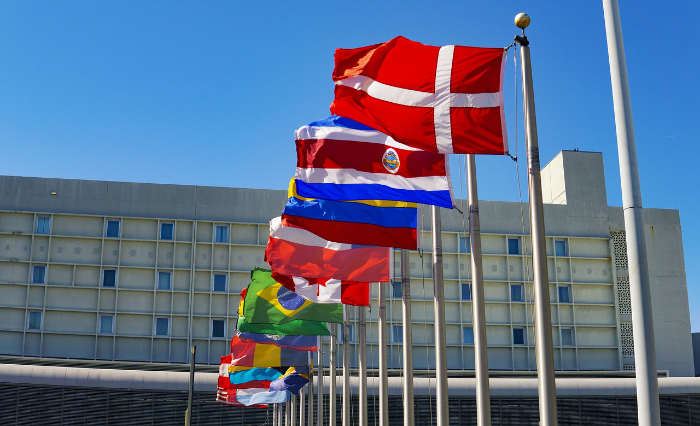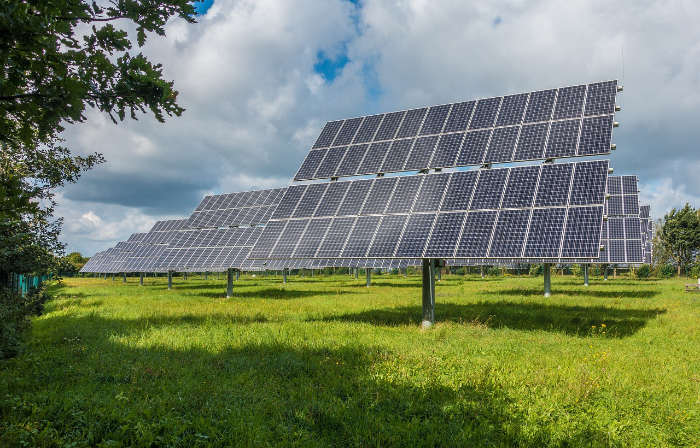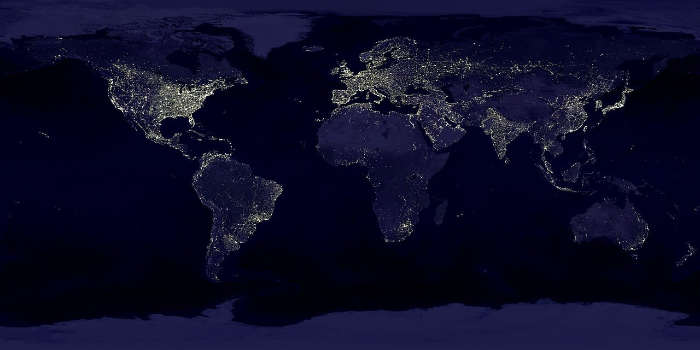Most Educated Countries 2025

10%
15%
20%
25%
30%
35%
40%
45%
50%
55%
60%
65%
5 Countries with the Most Tertiary Education
Country | Tertiary Total 2022↓ | Tertiary Total Men 2022 | Tertiary Total Women 2022 | Below Upper Secondary Total 2022 | Below Upper Secondary Men 2022 | Below Upper Secondary Women 2022 | Upper Secondary Total 2022 | Upper Secondary Total Men 2022 | Upper Secondary Total Women 2022 | |
|---|---|---|---|---|---|---|---|---|---|---|
 | Canada | 63% | 58% | 76% | 7% | 6% | 3% | 30% | 36% | 21% |
 | Japan | 56% | ||||||||
 | Ireland | 54% | 60% | 66% | 12% | 5% | 5% | 33% | 35% | 29% |
 | South Korea | 53% | 9% | 38% | ||||||
 | United Kingdom | 51% | 56% | 61% | 19% | 14% | 11% | 30% | 31% | 28% |
 | Australia | 51% | 49% | 63% | 15% | 10% | 7% | 34% | 41% | 30% |
 | Israel | 51% | 36% | 57% | 12% | 10% | 7% | 38% | 54% | 36% |
 | Luxembourg | 51% | 57% | 63% | 19% | 13% | 9% | 30% | 31% | 28% |
 | United States | 50% | 46% | 56% | 8% | 7% | 5% | 42% | 47% | 38% |
 | Sweden | 49% | 44% | 61% | 14% | 17% | 12% | 37% | 39% | 27% |
 | Norway | 48% | 47% | 66% | 17% | 19% | 13% | 35% | 34% | 21% |
 | Lithuania | 47% | 49% | 67% | 7% | 9% | 4% | 46% | 42% | 29% |
 | Belgium | 46% | 44% | 59% | 18% | 14% | 11% | 37% | 31% | 21% |
 | Netherlands | 45% | 52% | 61% | 19% | 11% | 8% | 37% | 36% | 31% |
 | Switzerland | 45% | 50% | 53% | 14% | 9% | 9% | 41% | 41% | 38% |
 | Iceland | 44% | 29% | 55% | 22% | 31% | 14% | 34% | 40% | 31% |
 | Finland | 43% | 35% | 47% | 11% | 10% | 8% | 46% | 55% | 45% |
 | France | 42% | 47% | 54% | 17% | 12% | 10% | 42% | 41% | 36% |
 | Denmark | 42% | 40% | 58% | 18% | 20% | 15% | 40% | 40% | 27% |
 | Estonia | 42% | 34% | 55% | 10% | 12% | 8% | 48% | 54% | 37% |
 | Spain | 41% | 44% | 57% | 36% | 32% | 21% | 23% | 24% | 22% |
 | New Zealand | 40% | 39% | 49% | 19% | 14% | 11% | 41% | 47% | 40% |
 | Slovenia | 40% | 36% | 60% | 9% | 6% | 3% | 51% | 58% | 36% |
 | Latvia | 39% | 35% | 57% | 11% | 14% | 7% | 50% | 51% | 36% |
 | Austria | 36% | 39% | 48% | 14% | 12% | 9% | 50% | 50% | 43% |
 | Greece | 35% | 39% | 52% | 20% | 9% | 7% | 45% | 52% | 42% |
 | Poland | 34% | 31% | 50% | 7% | 8% | 5% | 60% | 61% | 45% |
 | Germany | 33% | 35% | 40% | 16% | 17% | 15% | 51% | 48% | 46% |
 | Chile | 31% | 37% | 44% | 28% | 14% | 11% | 41% | 49% | 45% |
 | Portugal | 31% | 37% | 52% | 40% | 20% | 14% | 29% | 43% | 35% |
 | Bulgaria | 30% | 28% | 40% | 16% | 16% | 17% | 54% | 57% | 43% |
 | Hungary | 29% | 27% | 37% | 13% | 13% | 14% | 58% | 60% | 49% |
 | Slovakia | 29% | 28% | 51% | 7% | 7% | 7% | 64% | 65% | 43% |
 | Colombia | 28% | 29% | 39% | 38% | 26% | 19% | 34% | 45% | 41% |
 | Czech Republic | 27% | 27% | 43% | 6% | 7% | 7% | 68% | 66% | 50% |
 | Turkey | 25% | 39% | 44% | 53% | 32% | 34% | 22% | 29% | 22% |
 | Argentina | 25% | 16% | 22% | 33% | 30% | 24% | 42% | 54% | 54% |
 | Costa Rica | 25% | 28% | 34% | 55% | 46% | 37% | 20% | 26% | 29% |
 | Brazil | 21% | 19% | 27% | 41% | 32% | 24% | 38% | 48% | 49% |
 | Mexico | 21% | 27% | 28% | 56% | 43% | 43% | 23% | 30% | 29% |
 | Italy | 20% | 23% | 35% | 37% | 25% | 19% | 43% | 52% | 45% |
 | Romania | 20% | 23% | 57% | ||||||
 | China | 19% | 63% | |||||||
 | South Africa | 14% | 55% | 31% | ||||||
 | India | 13% | 22% | 19% | 78% | 62% | 69% | 9% | 16% | 12% |
 | Indonesia | 13% | 15% | 21% | 57% | 42% | 43% | 30% | 43% | 36% |
- According to the International Standard Classification of Education (ISCED), education levels are as follows:
- Tertiary education is commonly referred to as college or univeristy, but can also refer to trade schools.
- Upper secondary education is commonly referred to as high school.
- Levels below upper secondary are typically comprised of lower secondary/junior high or middle school, primary/grade school, and early childhood education/preschool.
- Data display rates for individuals aged 25-64 in the given year.
One of the most telling (and important) measures of a nation’s development is its education system. In developed nations, educational opportunities are plentiful and affordable, and most adults are literate and have at least a basic high school education. These countries have a high chance of ranking among the smartest countries in the world. By comparison, in still-developing nations, literacy rates and the number of people who have completed high school both tend to be lower. Underdeveloped and least developed nations typically have the lowest literacy rates and offer the lowest quality educational programs—in fact, many people in these nations may not have access to education at all.
Education Levels Explained
While each country has its own educational system, most conform to the International Standard Classification of Education scale, which makes it possible to compare various countries’ educational systems to one another. A country’s education levels are usually broken down into three tiers: below upper secondary (preschool up to high school), upper secondary (high school), and tertiary (college/university onward).
Below upper secondary education covers three phases on the International Standard Classification of Education scale, starting with preschool and ending around the time the student has undergone roughly 6-8 years of primary classroom instruction (sixth to eighth grade in the U.S. system). Upper secondary education comes next and introduces more subjects as well as courses that can prepare the student for vocational or tertiary education. Some degree of secondary education is compulsory in most countries. The path then splits, with some students entering the workforce and others moving on to vocational training (trade schools) or other tertiary (higher) education such as certificate and degree programs (Bachelor’s, Master’s, Doctorate).
Which Countries are the Most Educated Countries in the World?
According to a 2017 UNESCO report, the number of students worldwide attending higher education institutions increased from 100 million in 2000 to 207 million in 2014. But which countries are the most educated? This is not as easy a question to answer as one might hope, because “most educated” is an imprecise term. For example, which would be considered more educated – a country in which 50% of the residents have completed secondary education and 25% have attained a tertiary degree or one in which 100% of residents have completed secondary education but none have a tertiary degree?
Despite the vagueness of the concept, multiple surveys and studies have done their best to determine which countries have the most-educated population. One of the most highly regarded analyses comes from the Organization for Economic Cooperation and Development, or OECD, which releases lists of the world’s most educated countries.
The Top 10 Most-Educated Countries
Country | Tertiary Total 2022 |
|---|---|
| Canada | 63% |
| Japan | 56% |
| Ireland | 54% |
| South Korea | 53% |
| United Kingdom | 51% |
| Australia | 51% |
| Israel | 51% |
| Luxembourg | 51% |
| United States | 50% |
| Sweden | 49% |
The OECD list compares the percentage of each country’s residents ages 25 to 64 who have completed some form of tertiary education: a two-year or four-year degree or a vocational program. Based on the OECD’s data for 2022, Canada is the most educated country globally, with 63% of adults meeting the OECD criteria. Japan has the second-highest percentage of 56%, followed by Ireland with 54%. However, it’s worth noting that this list compared only the 43 countries that are members or partners of the OECD, leaving out roughly 150 countries that happen to not belong to the OECD. Also of note is the fact that these rankings change if the data are divided by age range. For example, compare the percentages for 55-64-year-olds in the tables below with the percentages for 25-34-year-olds. Comparisons such as these offer a glimpse into which countries are increasing support for education and which may be doing less.
Percentage of Citizens Who Have Completed Tertiary Education (by Generation) - OECD 2021
| Ranking | 55-64 year-olds | % | 25-34 year-olds | % | |
| 1 | Russia | 50.3 | South Korea | 69.8 | |
| 2 | Canada | 50.0 | Canada | 64.4 | |
| 3 | Israel | 46.1 | Russia | 62.1 | |
| 4 | Japan | 44.5 | Japan | 61.5 | |
| 5 | United States | 44.3 | Ireland | 58.4 | |
| 6 | Finland | 42.9 | Luxembourg | 58.2 | |
| 7 | United Kingdom | 39.4 | Lithuania | 56.2 | |
| 8 | Estonia | 39.2 | United Kingdom | 55.8 | |
| 9 | Australia | 36.3 | Australia | 54.6 | |
| 10 | Switzerland | 34.7 | Switzerland | 53.0 |
The Importance of Education
According to the Global Partnership for Education, education plays a crucial role in human, social, and economic development. Education can promote gender equality, reduce child marriage, promote peace, and increase a person’s chances of having a healthy life. The Global Partnership for Education considers education to be a human right, one that grants every person more opportunities in life, such as employment opportunities, better health, and the ability to participate in the political process.
Below is a table of each country’s percentage of people completing tertiary education, upper secondary education, and below upper secondary education, based upon 2022 OECD data.



















